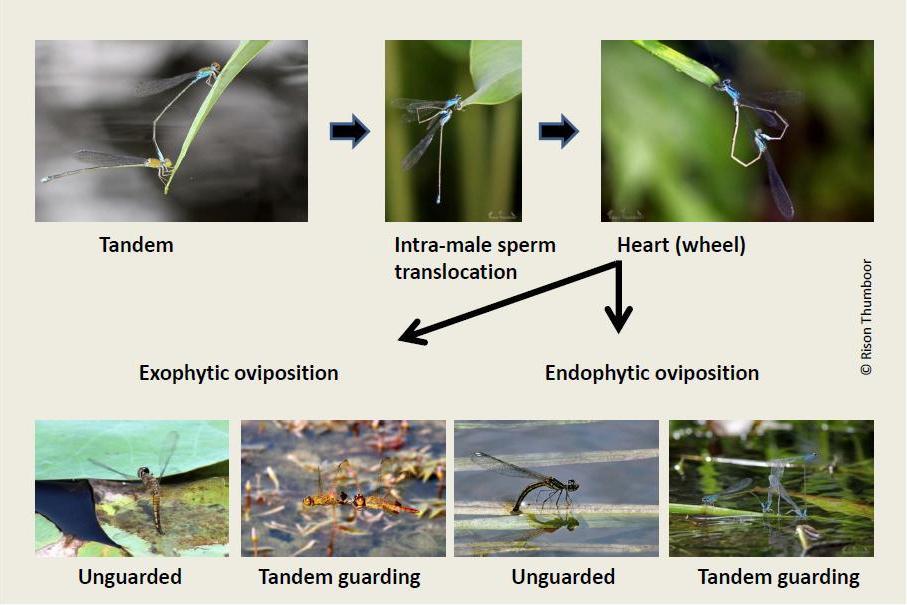Odonata is an order of carnivorous insects, encompassing the dragonflies (Anisoptera) and the damselflies (Zygoptera). They existed since the Permian period.
Odonates are amphibiotic; having an aquatic larval form and a terrestrial adult form. The adults are most often seen near bodies of water where they breed. They are carnivorous throughout their life; both as larvae and as adults. They mostly feeding on smaller insects.
Male odonates have a copulatory organ on the ventral side of abdominal segment two in which they store spermatozoa. Sperm is produced at the 9th segment and is transferred to the secondary genitalia prior to mating. They mate by holding the female’s head (Anisoptera) or thorax (Zygoptera) with claspers located at the tip of the male abdomen. Males may transfer the sperm to their secondary genitalia either before or after a female is held. The female bends her abdomen forward to touch the male organ and receive sperm. This is called the “wheel” position.

After mating, the females lay their eggs in water or on vegetation near water. They hatch to produce pronymphs and then develop into instars which molts several times before emerging as adults. Unlike most other insects, there is no pupal stage and the transition from larva to adult is known as incomplete metamorphosis.The larva may spend more than a year underwater before emerging as an adult. The adult stage is usually the shortest in the life-cycle and lasts for a few weeks.

 Society for Odonate Studies
Society for Odonate Studies